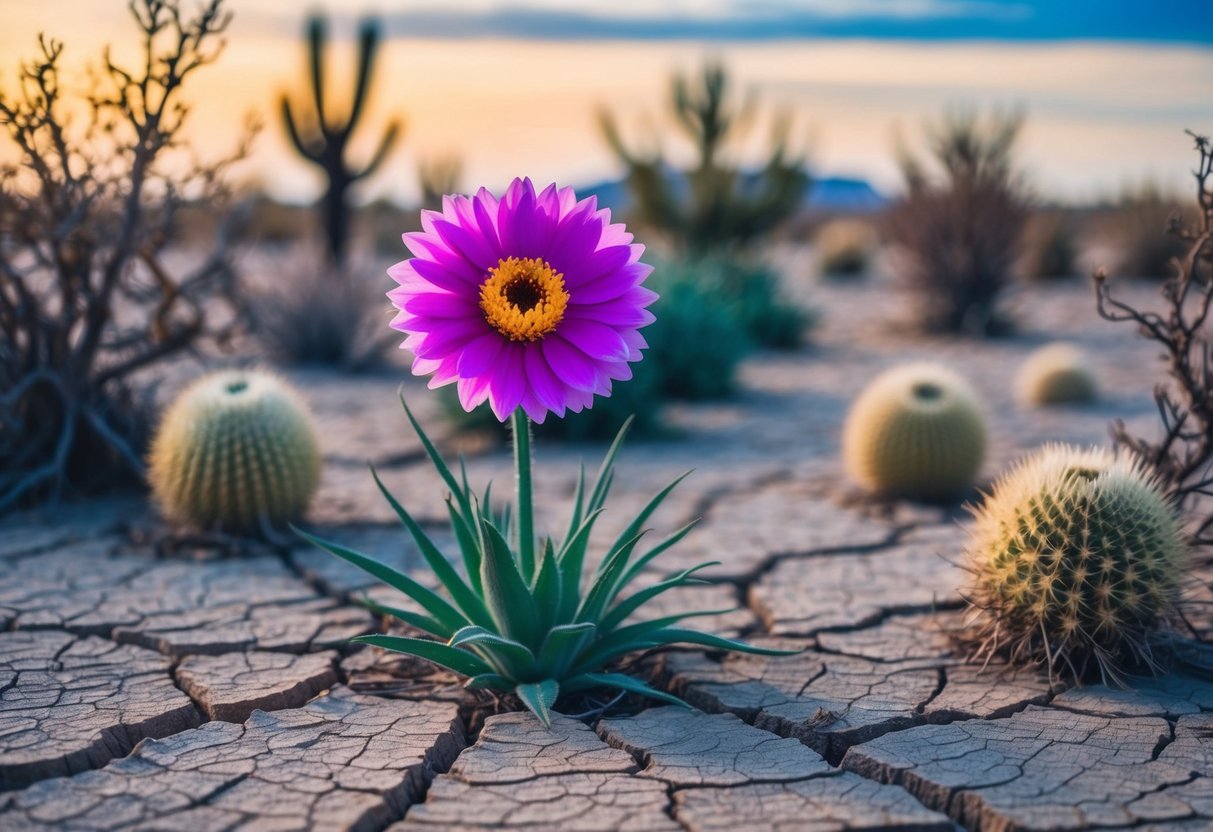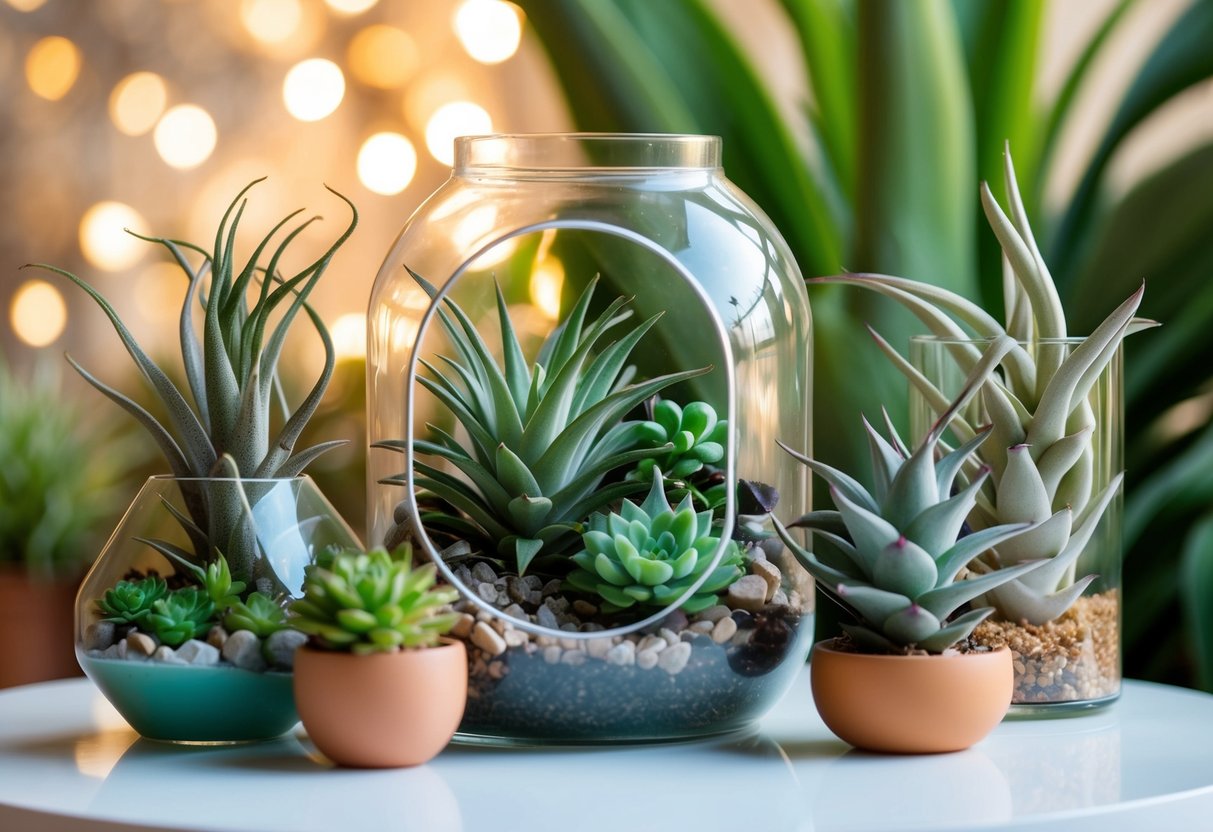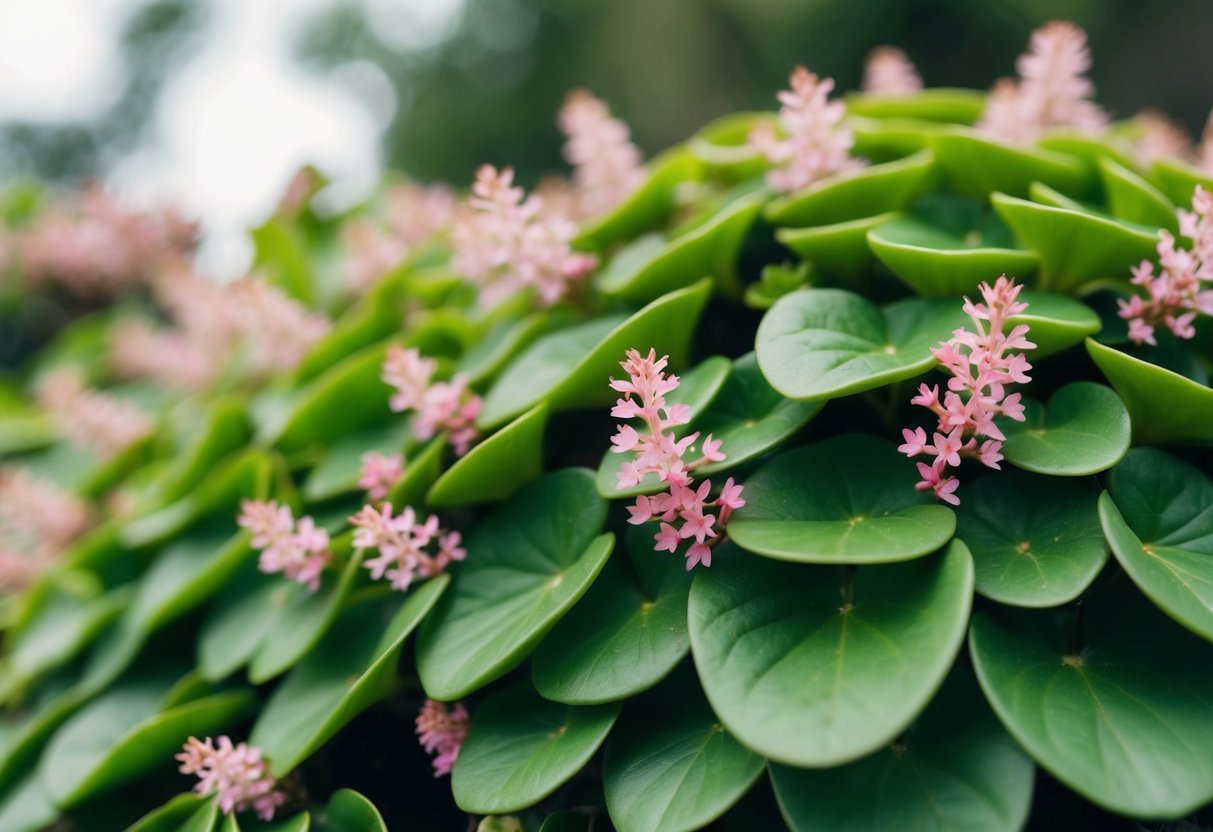What is the Name of the Flower That Never Dies? Discover Its Secrets
If you love plants that thrive with minimal care, you’re in for a treat. Among these wonders of nature is the Never Die Plant, known scientifically as Bryophyllum pinnatum. This fascinating plant lives up to its name by demonstrating incredible resilience and the ability to regenerate from just a single leaf. Perfect for anyone who wants a touch of green without the hassle, this plant often goes by other names such as the Resurrection Plant or Miracle Leaf.

You might find it intriguing that another plant famous for its durability is the Welwitschia. Native to the deserts of southwestern Africa, this plant is known in Afrikaans as “tweeblaarkanniedood,” which translates to “two leaves that cannot die.” Its unique ability to continuously grow just two leaves that last its entire life makes it a marvel of nature.
Imagine your garden filled with such hardy and low-maintenance plants. They not only provide beauty but also thrive under conditions that might challenge other plants, making them ideal for both novice and experienced gardeners. If you’re interested in learning more, exploring these resilient wonders might just be the perfect addition to your green space.
Eternal Blossoms: Myth or Reality?

Is there really a flower that never dies, or is it just a fascinating myth? In this section, we’ll explore the allure behind these supposed eternal blossoms and examine the truth behind claims of floral immortality.
The Allure of Perpetuity
The idea of a flower that never wilts captures the imagination. Think about a plant that blooms continuously, offering beauty without end. This concept is especially appealing in cultures that value eternity and timelessness. Some flowers are often linked to such concepts, like the lotus, which symbolizes spiritual growth and purity. In some myths, these everlasting blossoms represent love that defies the passage of time.
You’re likely familiar with the legend of the never die plant, which allegedly possesses an unending life cycle. While the idea of a truly immortal flower remains a fantasy, plants that are easily revitalized or have prolonged life cycles keep this enchanting notion alive.
Fact-Checking Floral Immortality
When you hear about eternal flowers, you might wonder if they actually exist. Scientific evidence suggests that no true “never die” flower has been discovered. Flowers like the amaranth and gladiolus are sometimes thought of as symbols of immortality because they can sustain beauty over long periods. However, they still undergo natural life cycles.
The amaranth, in particular, is associated with endurance and resilience. Its blooms last much longer than others, but they aren’t genuinely everlasting. Meanwhile, flowers like the lily of the valley symbolize eternity through their history and symbolism rather than actual lifespan. Understanding these concepts helps clarify the difference between myth and reality.
Unique Flora with Extended Lifespans

In the plant world, some species stand out due to their incredibly long lifespans. These unique plants thrive in harsh environments and can live for thousands of years. Understanding these remarkable flora can provide insight into their unique survival strategies.
Welwitschia: A True Survivor
Imagine a plant that can thrive in one of the harshest climates on Earth. Welwitschia is such a plant, and you can find it in the deserts of southern Angola and northern Namibia. It’s incredible because it has only two leaves throughout its life, which can last over a thousand years. These leaves grow continuously and can reach remarkable lengths, adapting to the desert conditions.
The plant relies on deep root systems to access underground water. This unique adaptation allows it to survive in an environment with minimal rainfall. Despite its rough surroundings, Welwitschia remains a symbol of resilience and longevity in the plant kingdom.
Remarkable Longevity in the Plant Kingdom
In the vast world of plants, some species display astounding lifespans. One example is plants with leaves that last for decades. The longest-lived leaves belong to Welwitschia, which persistently grows them throughout its life. This continuous growth means that old leaves are never shed.
Additionally, some trees reach lifespans of thousands of years, such as the bristlecone pine. These trees endure harsh weather and nutrient-poor soils. Despite their challenges, these plants showcase how diverse the survival techniques can be within the plant kingdom. These strategies highlight the incredible adaptability and resilience of these unique species.
Caring for Never Die Plants

The Never Die Plant, also known as the Bryophyllum pinnatum, is known for its resilience. To keep this plant healthy and thriving, pay attention to the light, soil, and watering conditions.
Optimal Conditions for Growth
Never Die Plants need bright, indirect sunlight to grow well. Place them near a window that gets a lot of light but avoid direct rays that could scorch the leaves. If keeping the plant indoors, consider using a grow light.
Use well-drained soil to ensure proper growth. A cactus or succulent potting mix is a great choice since it prevents water from sitting in the soil. This allows the roots to get plenty of air, which is crucial for a healthy plant. Make sure your pot has drainage holes to help manage moisture levels.
Preventing Common Issues like Root Rot
One of the main problems with these plants is root rot, usually caused by too much water. It’s important to let the soil dry out between waterings. When you do water, let it soak deeply, but be sure it drains freely. Avoid keeping the plant in waterlogged soil.
Overwatering is common, so feel the top inch of soil with your finger. Only water if it’s dry. Consider watering every two to three weeks depending on humidity and light conditions. Keeping the plant in well-draining soil reduces the risk of overwatering.
Succulents and Air Plants: Low-Maintenance Marvels

Discover why succulents and air plants are popular choices for those seeking low-maintenance houseplants. Their resilience and adaptability make them ideal for busy plant lovers.
The Tenacity of Succulents
Succulents are part of the crassulaceae family and known for their ability to thrive with minimal attention. Their leaves store water, allowing them to survive in dry environments. To care for these plants, give them a deep soak. Let the soil dry completely between waterings. This mimics their natural habitat and prevents root rot.
These plants love bright, indirect sunlight and can even tolerate a little direct sun. Place them near a window where they can bask in the light. Succulents come in many shapes and sizes, adding both texture and interest to your space. They are a perfect choice if you want a dependable plant that asks for little in return.
Air Plants: Carefree and Resilient
Air plants stand out because they don’t need soil to grow. These unique plants absorb nutrients and moisture through their leaves. They come from rainforests and deserts where they cling to rocks and trees. To water them, soak them in water for about 20-40 minutes every couple of weeks.
Air plants thrive indoors with bright, indirect light. Good airflow is important for them, so place them somewhere they can “breathe.” For feeding, fertilize monthly with a water-soluble fertilizer. Because of their versatility, you can display them in creative ways, like hanging glass globes or mounted on driftwood. They are excellent for those looking for minimal fuss with maximum beauty.
The Miraculous Nature of Bryophyllum Pinnatum

Bryophyllum pinnatum, also known as the miracle leaf or goethe plant, is famed for its healing properties and easy propagation. It is popular in traditional medicine and grows well in different conditions. Its unique features make caring for it a rewarding experience.
Healing Properties and Traditional Uses
The miracle leaf is cherished for its medicinal properties. It is known to have anti-inflammatory and antioxidant properties that can help in various treatments. In traditional medicine, it is often used for wound healing. You may find it beneficial for treating minor skin injuries or burns because of its soothing application.
In some cultures, the plant’s extract is used to manage diabetes. While research on this is ongoing, many believe in its potential benefits. It is important to speak with a healthcare provider before using it for any medical condition.
Beyond these uses, the life plant is valued for its nutritional content. Rich in vitamins and minerals, it contributes to overall well-being. When used for teas or juices, it offers a refreshing way to enjoy its benefits.
Propagation and Care
One fascinating aspect of bryophyllum pinnatum is its ability to propagate easily. The plant produces miniature plantlets along the edges of its fleshy leaves. These can be planted directly in soil to grow new plants. You can effortlessly expand your collection this way.
For care, the plant thrives with minimal attention. It prefers partial shade but can adapt to different light conditions. Regular watering supports its growth, yet it is resilient to occasional drought. This makes it a good choice for beginners or busy gardeners.
Maintaining healthy soil with good drainage ensures the goethe plant thrives. It doesn’t demand regular feeding, yet boosting with balanced fertilizers will enhance its lush appearance. With basic care and patience, you’ll enjoy this delightful addition to your garden.
Environmental Impact and Ethics

Flowers that survive in various environments can have significant impacts. They adapt to diverse habitats, but there’s a risk of them becoming invasive, threatening local ecosystems. Understanding these dynamics can influence ethical decisions in gardening and conservation.
Thriving in Varied Habitats
Some flowers have a unique ability to thrive in diverse habitats like those found in Madagascar and India. These plants adapt well to different climates, thriving in conditions ranging from dry deserts to lush forests.
This adaptability ensures they can survive with minimal care and resources, making them popular in gardens. However, their presence in different habitats isn’t always a positive thing. Once introduced, they often outcompete local plants for sunlight, water, and nutrients.
Invasiveness and Ecological Concerns
Invasive species pose a threat by altering ecosystems. These flowers, if unchecked, can dominate new areas, impacting local wildlife. They often displace native plants and reduce biodiversity, which might cause problems for other species relying on native vegetation.
Moreover, the potential toxicity of these plants to local wildlife must be considered. This toxic nature can affect the food chain and lead to imbalances, resulting in long-term ecological shifts. Managing these concerns is crucial for maintaining ecological integrity.







